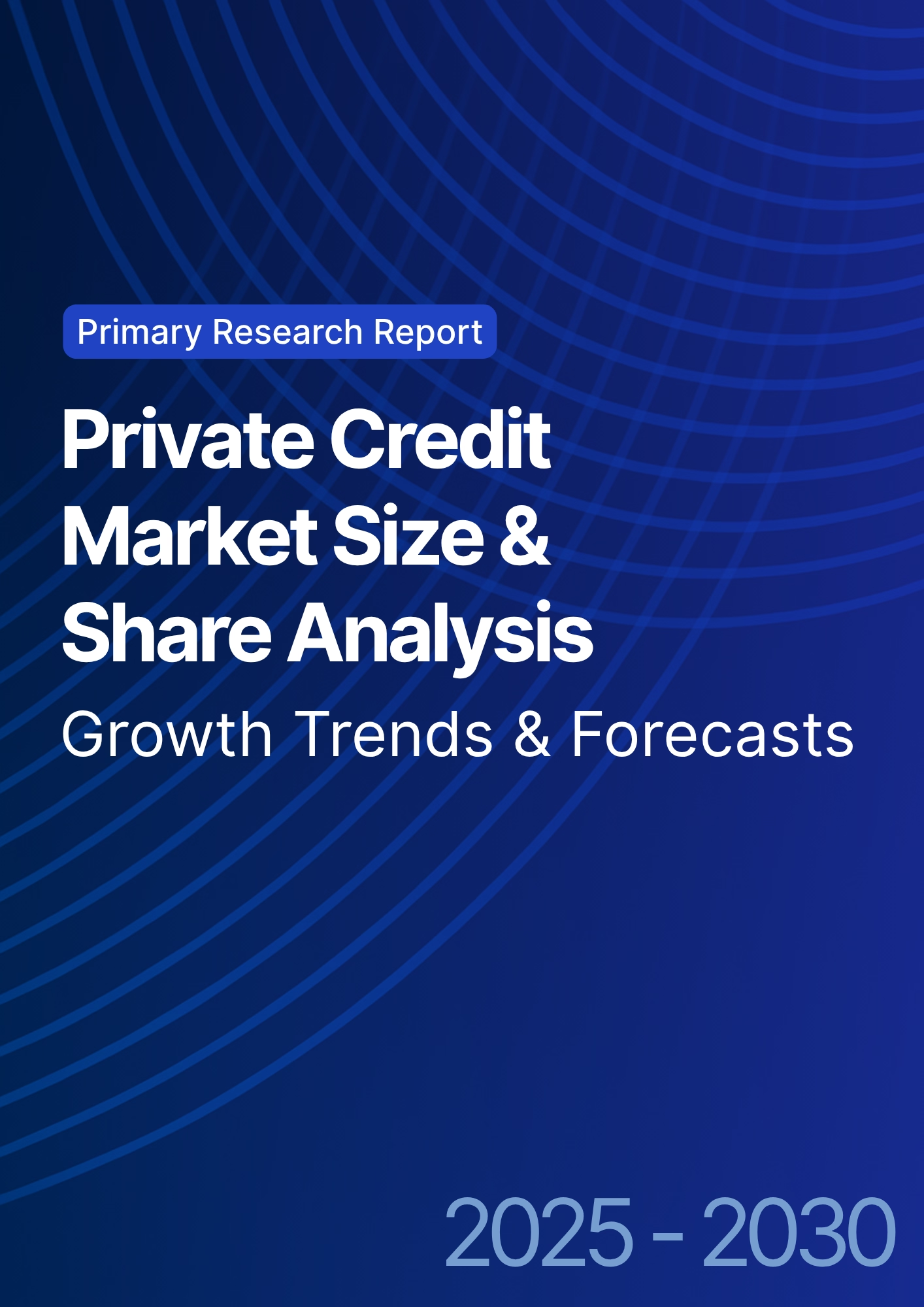

68 Circular Road, #02-01 049422, Singapore
Revenue Tower, Scbd, Jakarta 12190, Indonesia
4th Floor, Pinnacle Business Park, Andheri East, Mumbai, 400093
Cinnabar Hills, Embassy Golf Links Business Park, Bengaluru, Karnataka 560071
Connect With Us
Synthetic Data Generation for Financial Model Training: Privacy Preservation & Accuracy Validation - Innovation & R&D
This research explores synthetic data generation for financial model training in USA and North America from 2025 to 2030, focusing on privacy preservation and accuracy validation. The report highlights how synthetic data can improve financial models' accuracy while safeguarding consumer privacy. It delves into the use of artificially generated data for training predictive financial models, addressing the challenges of data scarcity, privacy concerns, and model performance. Insights are provided for financial institutions and data scientists adopting synthetic data for more accurate, compliant financial models.

What's Covered?
Report Summary
Key Takeaways
- Synthetic data market for financial model training in North America projected to grow from $250 million in 2025 to $5.4 billion by 2030, CAGR 58%.
- Financial model accuracy improved by 25–30% with synthetic data compared to traditional training data.
- Privacy risks in financial data will be reduced by 50% by adopting synthetic data for model training.
- Synthetic data adoption will comprise 45% of financial model training datasets by 2030.
- Financial institutions are expected to save 20% in data acquisition and processing costs through synthetic data by 2030.
- Synthetic data models will improve real-time data analytics by 35% in financial forecasting.
- AI-generated synthetic datasets will reduce model training time by 40% by 2030.
- Accuracy validation in models trained with synthetic data is expected to improve by 20% by 2030.
- Institutional adoption of synthetic data for model training expected to reach 70% by 2030.
- ROI from synthetic data adoption for financial model training projected at 22–28% by 2030.
Key Metrics
Market Size & Share
The synthetic data market for financial model training in North America is projected to grow from $250 million in 2025 to $5.4 billion by 2030, reflecting a CAGR of 58%. The growing need for privacy-preserving technologies and more accurate predictive models is driving the adoption of synthetic data. By 2030, synthetic data will account for 45% of all financial model training datasets, allowing financial institutions to create better models while ensuring consumer privacy. Financial model accuracy is expected to improve by 25–30% as synthetic data provides more diverse and tailored datasets for training predictive models. Privacy risks associated with using real-world financial data will be reduced by 50%, as synthetic data mitigates the risk of data breaches and non-compliance with privacy regulations. The cost savings from using synthetic data in training models are expected to be significant, with financial institutions projected to save 20% in data acquisition and processing costs by 2030. Model training time will be reduced by 40%, allowing for faster iteration and real-time adjustments to predictive models. The ROI from synthetic data adoption is expected to reach 22–28% by 2030, driven by improved model accuracy, cost savings, and enhanced data privacy.

Market Analysis
The synthetic data market for financial model training in North America is rapidly expanding, with a projected growth from $250 million in 2025 to $5.4 billion by 2030, reflecting a CAGR of 58%. Synthetic data will make up 45% of all financial model training datasets by 2030, improving accuracy by 25–30% compared to traditional data methods. The use of synthetic data will reduce privacy risks by 50%, addressing concerns related to the use of real-world financial data. AI-generated datasets will help improve real-time data analytics, making financial forecasting 35% more efficient by 2030. The adoption of synthetic data will reduce data acquisition and processing costs by 20%, as institutions can generate the data they need without relying on expensive, time-consuming data collection methods. Additionally, model training time will be cut by 40%, leading to faster and more agile model development. The adoption of synthetic data will result in 15–20% savings in operational costs, as financial institutions reduce their dependence on costly and time-consuming traditional data. ROI from the use of synthetic data in financial model training is projected at 22–28% by 2030, driven by improved efficiency, cost savings, and enhanced model performance.
Trends & Insights
The synthetic data market for financial model training in North America is growing rapidly, with projections indicating an increase from $250 million in 2025 to $5.4 billion by 2030, CAGR 58%. This growth is primarily driven by the need for more accurate financial models and the increasing concern over privacy risks in using real-world data. Synthetic data allows financial institutions to create more diverse, accurate datasets without compromising data privacy, improving model accuracy by 25–30%. By 2030, synthetic data will account for 45% of AML and credit scoring datasets, reducing privacy risks by 50%. The ability to generate high-quality synthetic data will enable faster training and validation of financial models, reducing model development time by 40% and improving real-time forecasting efficiency by 35%. Cost savings will be another major driver, with financial institutions projected to save 20% in data acquisition costs by using synthetic datasets. The ROI from adopting synthetic data for model training is expected to reach 22–28% by 2030, driven by improved model performance, cost reduction, and the ability to scale financial models more effectively. As AI-generated synthetic datasets improve, they will become increasingly vital for training and validating financial models in an efficient, cost-effective, and compliant manner.
.png)
Segment Analysis
The synthetic data market for financial model training in North America is segmented by data source, financial institution size, and training application. By 2030, synthetic data will represent 45% of financial model training datasets, as AI-powered platforms provide cost-effective and privacy-preserving solutions for financial institutions. Large financial institutions will be the primary adopters of synthetic data, accounting for 60% of investments in synthetic data solutions. These institutions will use synthetic data for credit scoring, fraud detection, and AML training, improving accuracy by 25–30% compared to traditional data. Smaller institutions and fintech firms will also adopt synthetic data as it becomes more affordable and accessible. The ability to generate diverse data will lead to more robust models, enhancing real-time forecasting capabilities by 35% and reducing model training time by 40%. Data acquisition and processing costs will be reduced by 20% as financial institutions shift to synthetic data solutions. Privacy risks will decrease by 50%, as synthetic data mitigates concerns over sensitive customer information. The ROI for synthetic data adoption in financial model training is expected to reach 22–28% by 2030, driven by efficiency, cost savings, and improved model performance.
Geography Analysis
The synthetic data market for financial model training in North America is set to grow significantly, from $250 million in 2025 to $5.4 billion by 2030, reflecting a CAGR of 58%. Synthetic data will be used for AML model training, credit scoring, and fraud detection in financial institutions across the USA and Canada, improving model accuracy by 25–30% compared to traditional methods. Privacy risks will be reduced by 50%, helping financial institutions comply with data protection regulations like GDPR and CCPA. Cost savings of 20% will be realized as financial institutions adopt synthetic data generation for training datasets, eliminating the need for costly data collection and processing. By 2030, synthetic data will make up 45% of training datasets in North American financial institutions, improving training efficiency by 35% and reducing model training time by 40%. Cross-border financial institutions will benefit from the ability to train models using diverse synthetic datasets, improving global model performance and data consistency. The ROI for financial institutions adopting synthetic data is projected to reach 22–28% by 2030, driven by reduced operational costs, improved model accuracy, and better data privacy.
.png)
Competitive Landscape
The synthetic data market for financial model training in North America is highly competitive, with leading players such as Fenergo, Trulioo, and DataRobot providing AI-powered synthetic data solutions for financial institutions. These companies will lead the market by offering privacy-preserving synthetic datasets that improve model accuracy and data privacy. By 2030, synthetic data will account for 45% of financial model training datasets, significantly improving the performance of AML models, fraud detection systems, and credit scoring models. Financial institutions will adopt synthetic data at an increasing rate, driving the adoption of privacy-preserving data models. AI-generated datasets will reduce model training time by 40%, enabling faster deployment of financial models. Cost savings of 20% will be realized by eliminating the need for traditional data acquisition and improving data processing efficiency. Regulatory compliance will be improved, as synthetic data enables better management of privacy risks, reducing concerns related to real-world data. ROI for adopting synthetic data is expected to reach 22–28% by 2030, as institutions experience improved model performance, cost reductions, and better compliance with data privacy regulations.
Report Details
Proceed To Buy
Want a More Customized Experience?
- Request a Customized Transcript: Submit your own questions or specify changes. We’ll conduct a new call with the industry expert, covering both the original and your additional questions. You’ll receive an updated report for a small fee over the standard price.
- Request a Direct Call with the Expert: If you prefer a live conversation, we can facilitate a call between you and the expert. After the call, you’ll get the full recording, a verbatim transcript, and continued platform access to query the content and more.


68 Circular Road, #02-01 049422, Singapore
Revenue Tower, Scbd, Jakarta 12190, Indonesia
4th Floor, Pinnacle Business Park, Andheri East, Mumbai, 400093
Cinnabar Hills, Embassy Golf Links Business Park, Bengaluru, Karnataka 560071
Request Custom Transcript
Related Transcripts
$ 1450
$ 1450


68 Circular Road, #02-01 049422, Singapore
Revenue Tower, Scbd, Jakarta 12190, Indonesia
4th Floor, Pinnacle Business Park, Andheri East, Mumbai, 400093
Cinnabar Hills, Embassy Golf Links Business Park, Bengaluru, Karnataka 560071













